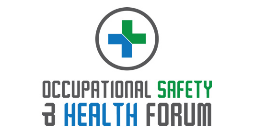The UK Government needs to take more action to prevent thousands of people dying from asbestos exposure every year – 25 years on from the deadly material being banned.
That’s the call from the Institution of Occupational Safety and Health (IOSH), which says that despite the ban, an estimated 300,000 non-domestic buildings built before 1999 still contain the deadly material.
With many of these buildings requiring refurbishment, in addition to the drive for net zero meaning many of them being retrofitted, tradespeople and building users will be put at risk if it isn’t managed properly.
As such, IOSH has renewed its call on the Government to work with policy makers, regulators, employers and worker representatives to increase awareness.
Ruth Wilkinson, Head of Policy and Public Affairs at IOSH, said: “We know that about 5,000 people a year die from asbestos-related diseases every year in the UK. While the cause of their illness was likely exposure from decades ago, we believe that people are still being exposed today, putting them at risk of terminal cancers such as mesothelioma in the years to come. This is unacceptable. What is of significant concern is the lack of consistency in managing asbestos among duty holders and a lack of awareness and knowledge about it among those who are coming into contact with it, particularly in smaller businesses.”
The Work and Pensions Committee has previously called for a 40-year deadline to be set for the removal of asbestos from all public and commercial buildings. This followed an inquiry, which IOSH contributed evidence to. The Government swiftly rejected this proposal, in July 2022, promoting IOSH to call for a combined effort to tackle the asbestos issue.
“While we supported the committee inquiry and the recommendations, we did highlight that there are still hazards and risks associated with removal,” added Wilkinson. “What we’d really like to see is a collective effort by policy makers, government, regulators, employers and worker representatives to address this.
“Within the UK this can be part of a national strategic plan which is aligned to the built environment and net zero initiatives, as is it expected that buildings will require maintenance, renovation or demolishing as part of that agenda. Such a plan must therefore have a focus on duty holders, the duty to manage asbestos, and the competence of individuals and include the development of clear guidance around managing asbestos. It should also include enforcement. Also essential to it is improved training for employees which raises awareness of the dangers of exposure, informs them how to deal with asbestos and what to do if they come across it.
“Nearly two years have now passed and there hasn’t been any progress. Action is needed now. People’s lives depend on it.”
IOSH has a suite of guidance on managing exposure to asbestos, which was launched as part of its No Time to Lose campaign on occupational cancer. The campaign, which was launched ten years ago, supported businesses on preventing exposure to harmful materials such as asbestos and silica dust as well as to diesel engine exhaust emissions and solar radiation.
The UK has just marked the 20th Global Asbestos Awareness Week. It is organised by the Asbestos Disease Awareness Organization, which was founded by Linda Reinstein and Doug Larkin in 2004 and is based in California, USA.







